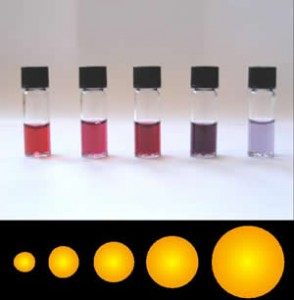FRIDAY, 30 OCTOBER 2009
Catalytic activity can be very hard to measure. Currently the reaction of model catalysts is investigated under isolated conditions that do not resemble the conditions under which the catalysts are normally used. The reactions are judged purely on their products without further inquiry in the mechanisms going on. A group of scientists from Chalmers University, Sweden have recently developed a system to measure catalytic activity in situ using the colour of nanoparticles, which could change all this.Elin Larsson and his group use nanoparticles as clever, indirect sensors, to track the catalyst and the products it is reacting with. This technique is not new, this idea is also used for developing biosensors, but applied to catalysts could pose a break-through in the understanding of the underlying processes.
Little gold nanodiscs are covered with a special adhesive to which the catalyst particles are attached. The nanoparticles act as plasmonic probes; they allow light of a certain wavelength to couple into the surface as a standing wave, which results in it appearing a certain colour. The wavelength of light which is coupled or absorbed, depends on the shape of the particle. Any change in size due to absorption of molecules results in a shift in the wavelength absorbed and can be easily monitored optically. The authors estimate that they could detect coverage down to one thousandth of the nanoparticle's surface, using this technique.
Written by Kathrin Holtzmann

